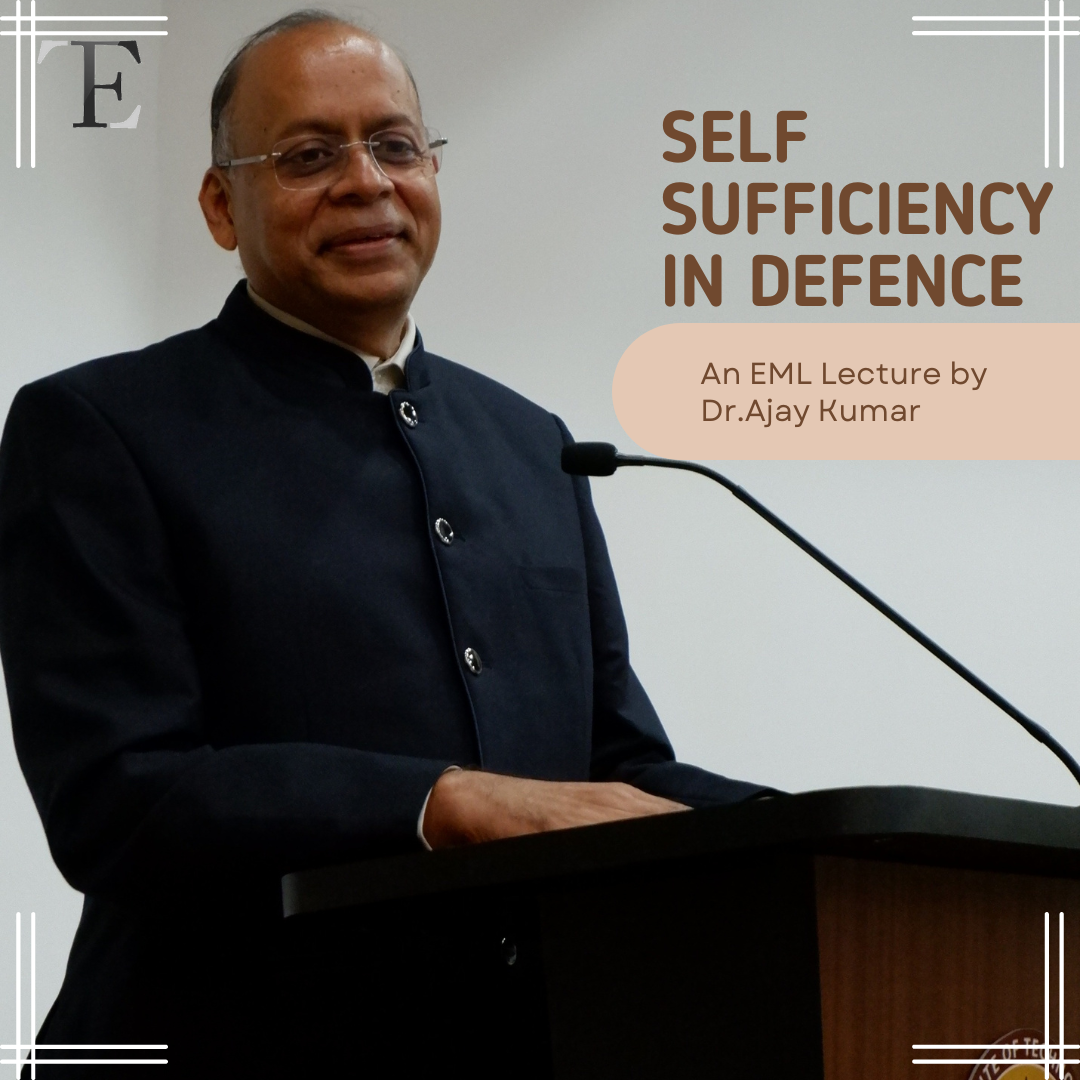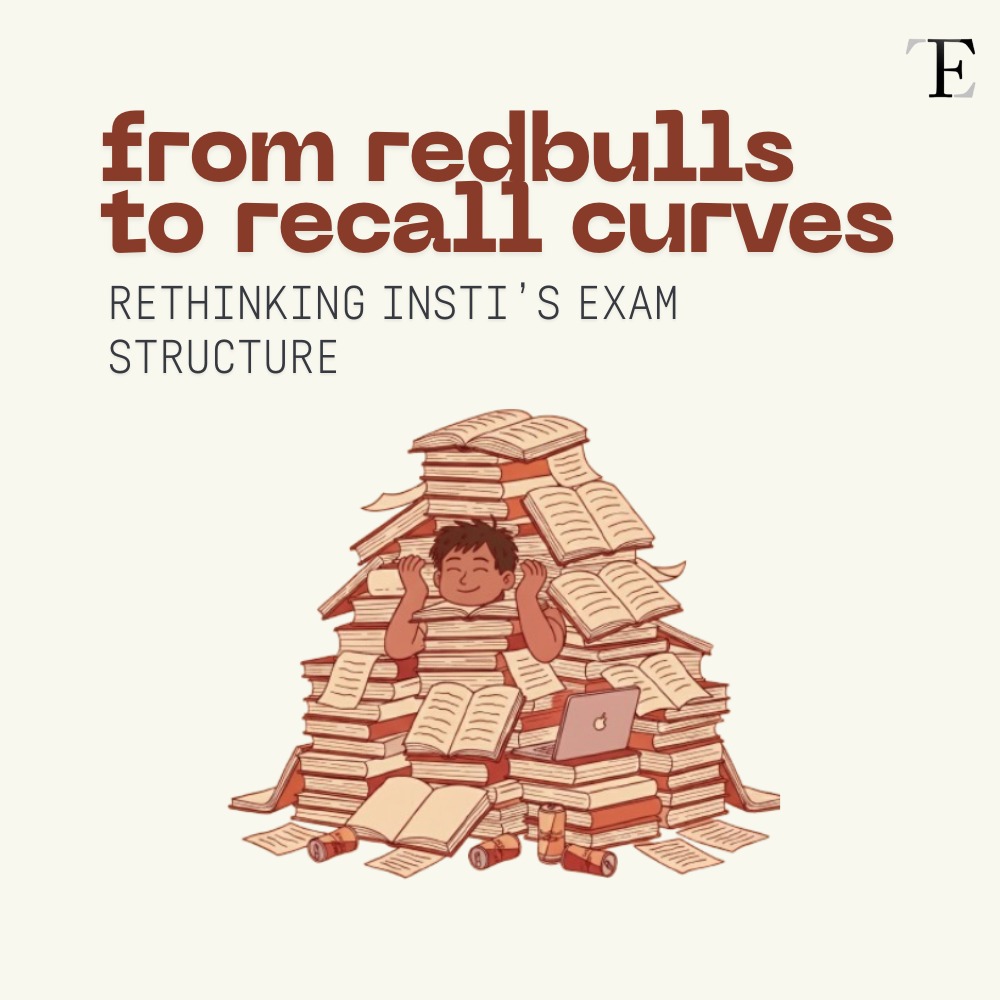Edited by Sahil Halarnkar
“Why do you think the army is important?” is how Dr. Ajay Kumar opened the first Speaktember EML Lecture held at IC&SR Building. Dr Ajay Kumar is a 1985 batch officer in the Indian Administrative Service and is currently serving as India’s Defence Secretary. He is an IIT Kanpur and University of Minnesota alumnus.
An accomplished bureaucrat, Dr. Kumar is associated with deploying contemporary military capabilities, disruptive technologies, and innovations in the defence sector. He started the iDEX project to build a supportive and affordable defence start-up ecosystem that encourages technological advancement, which he recollects was launched in Chennai a couple of years ago. He is in charge of Project 75I, building the foundation for an Indian marine and aerospace industrial ecosystem and producing next-generation submarines and warplanes.
His opening question churns a chain of thought, what if the army is not there? How does an army historically dependent on foreign countries for defence exports retain the same sovereignty as the one manufacturing and exporting defence technology around the globe? In the world, India spends the third most on its military. In fact, with defence spending making up about 2% of GDP, India’s budget for that sector alone is a great fiscal commitment. However, approximately only 30% of India’s defence equipment is produced here, a situation that leaders and experts in the industry think needs to change if India’s defence industry is to become self-sufficient. The defence secretary stresses during the lecture the importance of enhancing India’s domestic manufacturing capabilities and encouraging self-reliance in the production of defence goods through the indigenization of research and development, design, technology, as well as greater private sector involvement.

The state of war is directly related to the state of technology that a country possesses. When you’re dependent on imported technology, you put your sovereignty at risk, and that is why India is upping the ante by focusing on indigenous production of defence technology. India has a defence production ecosystem that is primarily public sector oriented. Less than 3% of procurement is from the private sector; the rest is from the public sector. Dr. Kumar reiterates that having access to our technology enables us to achieve true independence, or Atmanirbhar Bharat, by declaring that 25% of the Defense R&D budget allocation will be set aside for R&D by private businesses, academics, and startups.
For instance, a cabinet-level committee of the ministers of defence, foreign affairs, and national security has been established to approve exports in the defence area. To attain Atmanirbhar Bharat in the defence sector and encourage defence exports, there is clear governmental direction and decision. This is one of the factors behind the sharp rise in defence exports and the expansion of indigenisation activities. In this regard, he mentions how Tamil Nadu itself is a hub for auto components, and yet India’s in-house production capabilities have not been explored to their full potential. It is the need of the hour to ensure that our in-house production elements are reflected in our defence manufacturing system, and a strong industry logic needs to be employed that focuses on capturing all the aspects of the changing defence landscape.
The pandemic came as a reckoning, when the demand for ventilators soared, foreign companies prioritised commitments toward their own country first. It was then that a Mysuru-based company came into the spotlight as many countries banned the export of ventilators. What came into perspective was that the Central Drugs Standard Control Organization and the government needed to ease the regulatory process to promote indigenous production. Sharing anecdotes of his personal experience in the matter, he mentions the Republic Day programme and the majestic drone show that lit up the Delhi skies during the Beating the Retreat Parade, which Botlab Dynamics put up. This IIT Delhi start-up has since then been a part of shows across the world. The 1000-strong drone fleet that swarmed the skies could have been foreign if an Indian company hadn’t risen to the occasion.
Trust in our own products is an essential part of the process, as we can see from the induction of the glorious INS Vikrant, to the Arjun Tank and Tejas into the Indian Navy and Air Force, which is a matter of great pride. Even as we failed to leverage our start-up ecosystem earlier, it is imperative to highlight the iDEX story that unfolded in Chennai and has since then given the country Tejas and 14 other defence technologies that have been tried and tested in the country and the procurement process has started.
In the age of ToT-based production and quantum computing distribution, India is in the process of stopping all imports of defence manufacturing, and manufacturing it in India. As he reflects on how the market is beginning to acknowledge India’s defence manufacturing capabilities, he mentions his own career in the US in the early 90s, and how, even then, Indians were a force to be reckoned within the technology sector. In essence, Dr. Kumar’s lecture was a discourse on Atmanirbhar Bharat and exploring where India’s capabilities lie. It is only the beginning of a journey towards self-sufficiency.





